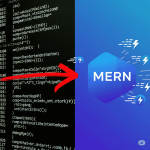Transitioning from a PHP-based web application to a modern MERN stack (MongoDB, Express.js, React, Node.js) can offer significant benefits in terms of performance, scalability, and maintainability. If you’re considering this migration, here’s a detailed, step-by-step guide to help you navigate the process:
1. Understanding the MERN stack
Before starting the migration, familiarize yourself with the components of the MERN stack:
- MongoDB: A NoSQL database that stores data in flexible, JSON-like documents, allowing for dynamic data structures..
- Express.js: A framework for building web applications and APIs with Node.js.
- React: A JavaScript library for building user interfaces.
- Node.js: A server-side JavaScript runtime environment.
2. Planning the migration
Thorough planning is key. Begin by assessing your existing PHP application to understand its functions, dependencies, and areas for enhancement.
- Identify objectives: Define what you hope to achieve with the migration.
- Evaluate application architecture: Analyze the current structure and dependencies to see how they fit with the MERN stack.
- Choose a MERN framework (if applicable): Decide on a framework like Express.js, Koa, or NestJS for Node.js.
3. Database migration (MySQL to MongoDB)
Moving your database from a traditional SQL system like MySQL to MongoDB is a key step.
- Analyze SQL database structure: Examine your current database’s schema and relationships.
- Create an Entity-Relationship (ER) diagram: Visualize the database structure.
- Design a MongoDB database schema: Create a MongoDB schema based on your ER diagram.
- Data migration: Export your data, transform it for MongoDB, and import it, ensuring data integrity.
4. Setting up the Node.js backend
Build the server-side logic using Node.js and Express.js.
- Install Node.js and npm: Set up your environment.
- Initialize a new Node.js project: Create a
package.jsonfile. - Rewrite PHP code in Node.js: Convert your PHP code to JavaScript, paying attention to asynchronous operations.
- Implement RESTful APIs: Design your backend APIs using REST principles.
- Database interaction: Use Node.js modules like Mongoose for MongoDB interactions.
- Authentication and security: Implement authentication and security using libraries like
jsonwebtokenandbcrypt. Follow security best practices.
5. Building the React frontend
Create the user interface using React.
- Create a React App: Set up your React project.
- Develop React components: Build the UI using React’s component-based approach for interactive interfaces..
- Connect to the backend: Use libraries like Axios or
fetchto interact with your Node.js backend.
6. Testing and quality assurance
Thorough testing is crucial.
- Create a testing plan: Develop a plan for different types of testing.
- Utilize testing frameworks: Use frameworks like Mocha, Chai, or Jest.
- Conduct load testing: Test your application’s performance and scalability.
- Optimize code: Improve your code for performance and maintainability.
7. Deployment and monitoring
Deploy your MERN application and monitor its performance.
- Choose a hosting provider: Select a platform that supports your stack, such as AWS, Azure, or Heroku.
- Implement CI/CD pipelines: Automate deployment with tools like Jenkins or GitHub Actions.
- Monitor performance: Watch your application closely and set up monitoring tools.
Conclusion
Migrating from PHP to the MERN stack is a significant project requiring careful planning and execution. By following these steps, you can successfully transition to a modern, scalable, and efficient MERN architecture, preparing your application for growth and a better user experience.
